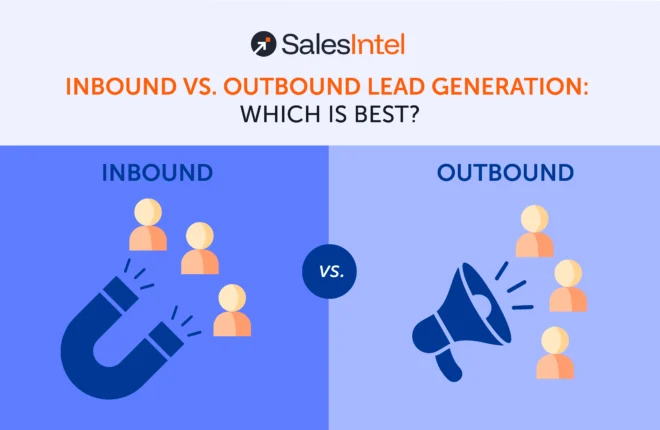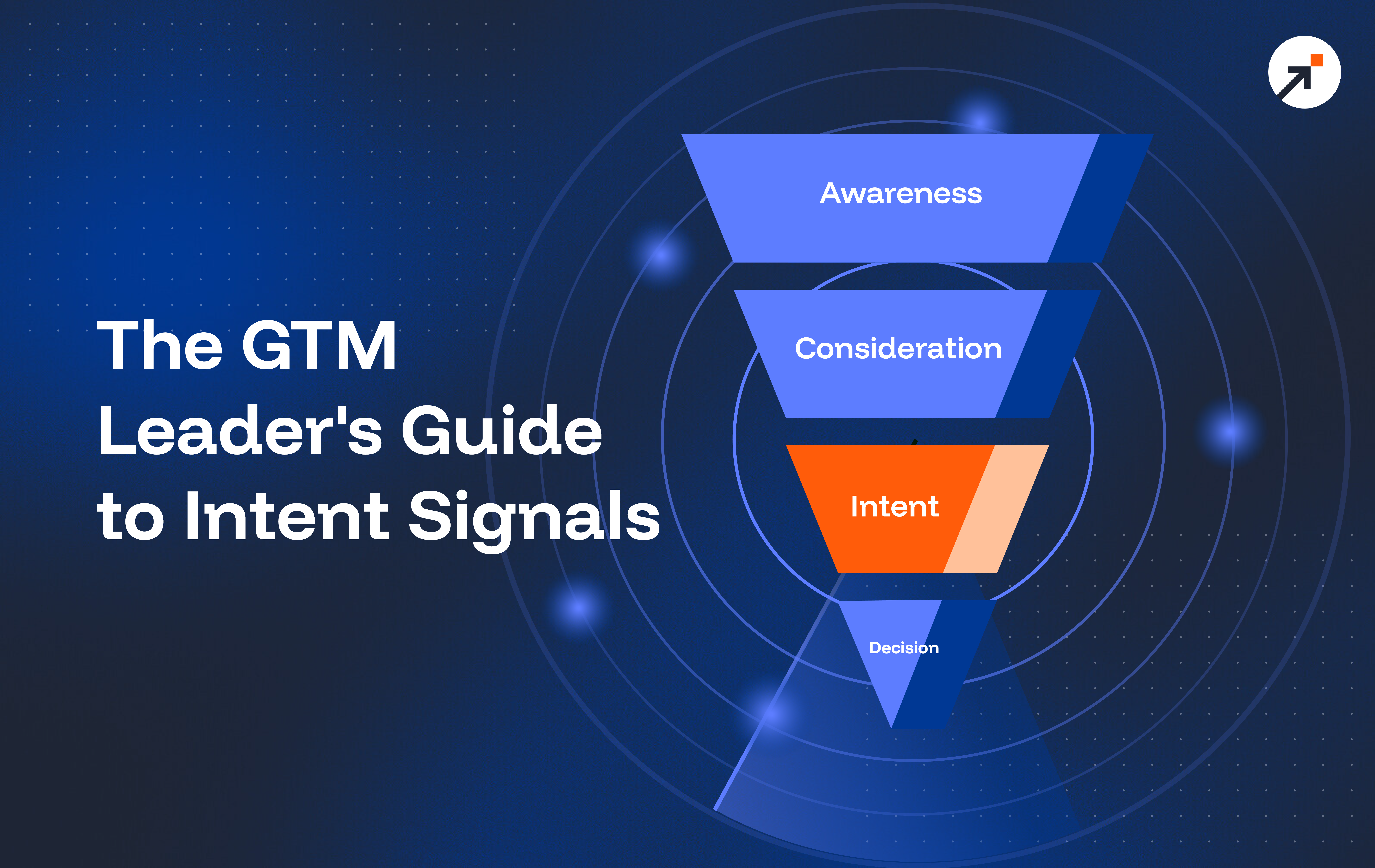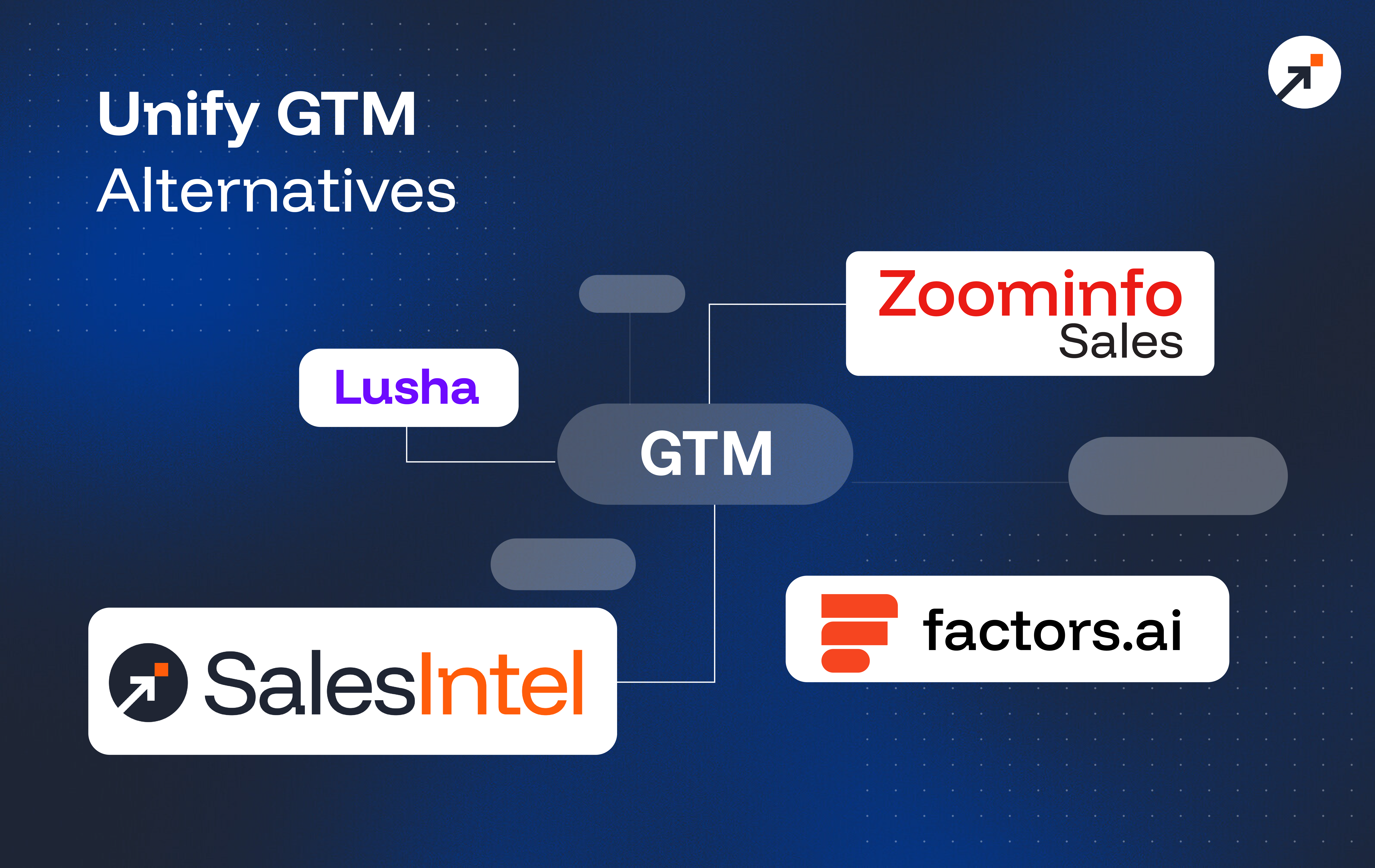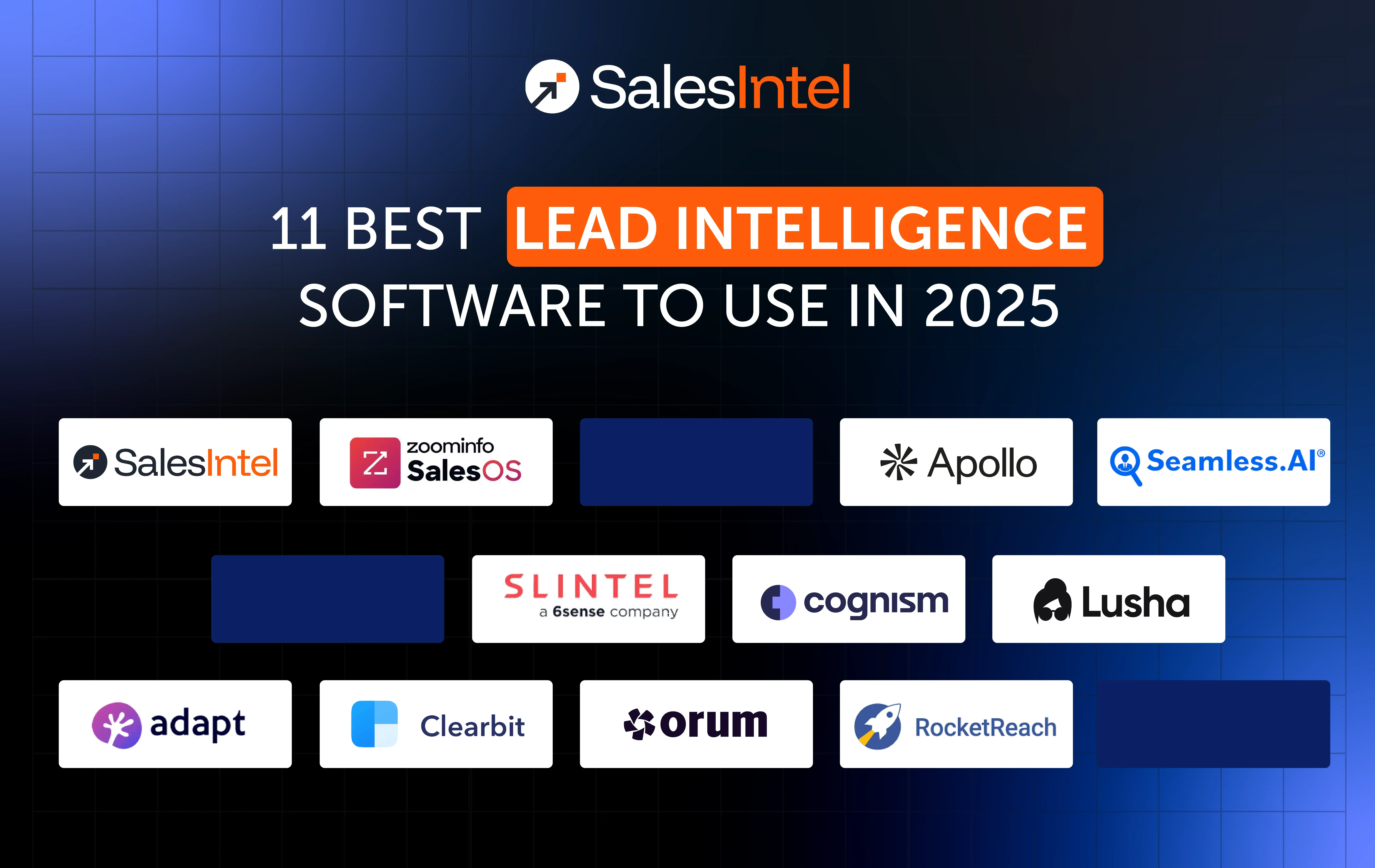You feel the pressure, right? Build the pipeline. Feed sales. Show ROI. As a Marketing Leader, whether you’re the CMO or Head of Demand Gen, the quest for high-quality leads is relentless. You’re constantly evaluating strategies, channels, and technologies.
Two terms dominate this conversation: Inbound and Outbound lead generation.
You’ve heard the debates. “Inbound is king!” “Outbound is dead!” “No, outbound is essential for B2B!” Frankly, much of the discussion misses the point. It’s not about picking a side in a marketing dogma war; it’s about understanding the right levers to pull for your specific growth goals.
Let’s cut through the noise. This isn’t just another definition post. We’ll break down inbound and outbound, explore the crucial (and often ignored) ROI implications, look at the tools you need today, and ultimately help you architect the most powerful pipeline engine for your B2B organization.
What Exactly is Inbound Lead Generation? The Magnet Approach
Inbound lead generation is about attracting potential customers to your brand organically. Instead of interrupting prospects, you create valuable content and experiences that pull them in when they are actively looking for solutions or information.
Think of it as setting up a magnetic resource hub. Your ideal customers, searching for answers to their problems, find your content, engage with it, and willingly raise their hand to learn more.
Hallmarks of Inbound:
- Permission-Based: Prospects opt-in to engage with you.
- Value-Driven: Focuses on educating, informing, or entertaining.
- Customer-Centric: Aligns with the buyer’s journey and search intent.
- Builds Assets: Content (blogs, ebooks, webinars), SEO rankings, and brand authority compound over time.
Common Inbound Strategies:
- Content Marketing: Creating high-quality blog posts, eBooks, whitepapers, case studies, infographics, videos. (The fuel for the inbound engine).
- Search Engine Optimization (SEO): Optimizing your website and content to rank higher in search engine results (like Google) for relevant keywords your buyers use.
- Social Media Marketing: Engaging with your audience, sharing valuable content, and building a community on platforms like LinkedIn.
- Paid Search (PPC): Running targeted ads on search engines (e.g., Google Ads) to capture active search intent.
- Website Conversion Optimization: Using compelling calls-to-action (CTAs), optimized landing pages, and lead capture forms (like demo requests or newsletter sign-ups).
- Email Marketing: Nurturing leads who have opted-in with targeted email sequences.
The Upside: Leads generated via inbound often have higher initial intent (they sought you out), can have a lower long-term Cost Per Lead (CPL), and build valuable brand equity.
The Catch: It takes time (think months, not weeks) to build momentum and see significant results. It requires consistent effort in content creation and promotion.
And What About Outbound Lead Generation? The Targeted Approach
Outbound lead generation is the proactive approach. Instead of waiting for prospects to find you, your sales and marketing teams actively identify and reach out to potential customers who fit your Ideal Customer Profile (ICP).
Think of it as targeted spear phishing (the legal, business kind!). You know who you want to reach, and you initiate the conversation.
Hallmarks of Outbound:
- Proactive: You initiate contact with specific individuals or accounts.
- Direct: Uses channels like email, phone calls, social media messages, direct mail.
- Targeted: Focuses on specific ICPs, accounts (ABM), or market segments.
- Control & Speed: Offers more immediate control over lead volume and can generate results faster.
Common Outbound Strategies:
- Cold Email Outreach: Sending personalized emails to targeted prospects. (Personalization and relevance are key here!)
- Cold Calling / Sales Development: SDRs (Sales Development Representatives) reaching out to prospects via phone.
- LinkedIn/Social Selling: Engaging directly with prospects on professional networks like LinkedIn Sales Navigator.
- Account-Based Marketing (ABM): Highly personalized marketing and sales efforts targeted at a specific list of high-value accounts.
- Intent Data: Using signals that indicate a company is actively researching solutions like yours to time outreach effectively. (Hint: This is where accurate data becomes mission-critical).
- Direct Mail: Sending physical items or targeted mailers to key prospects.
- Events/Trade Shows (Virtual & In-Person): Proactively engaging potential buyers at industry gatherings.
The Upside: Outbound can deliver faster results, allows for precise targeting of high-value accounts, gives you direct control over outreach volume, and is essential for breaking into new markets or launching new products.
The Catch: It often has a higher CPL, can be perceived as intrusive if done poorly (spam!), and its success is highly dependent on the quality and accuracy of your contact data. Bad data = wasted effort and potential brand damage.
Inbound vs. Outbound: The Key Differences at a Glance
| Feature | Inbound Lead Generation | Outbound Lead Generation |
| Approach | Pull (Attract) | Push (Proactive Outreach) |
| Initiator | Prospect finds you | You find the prospect |
| Communication | Permission-based, value-driven | Direct, targeted |
| Lead Intent | Often higher initial intent (researching) | Varies; can be cold or based on intent signals |
| Typical CPL | Lower long-term ($150-$400+) | Higher ($300-$900+, varies greatly by industry) |
| Time to Impact | Slower (3-6+ months for significant results) | Faster (can see leads in weeks) |
| Scalability | Scales organically over time | Scales directly with investment & resources |
| Key Assets | Content, SEO rankings, Brand Authority | Accurate Data, SDR Team, Outreach Cadence |
| Primary Goal | Attract, Educate, Convert | Identify, Engage, Qualify |
The ROI Reality Check: What the Gurus Don’t Always Tell You
Okay, let’s talk dollars and sense. Many articles gloss over this, but as a leader focused on pipeline, ROI is paramount.
- Cost Per Lead (CPL): Yes, outbound CPL is typically higher ($300-$900+ vs. $150-$400+ for inbound, per SalesAR benchmarks). But, CPL isn’t the whole story. A higher CPL for an outbound lead that converts quickly into a high-value deal can deliver fantastic ROI. B2B CPLs also vary wildly – a lead in competitive Cybersecurity might cost $1000+, while other sectors are lower.
- Time to ROI: Inbound ROI is a long game. You invest in content and SEO now for returns months down the line. Outbound can provide faster ROI, generating meetings and opportunities within weeks, which is crucial for hitting quarterly targets.
- Quality vs. Quantity: Inbound often yields leads already interested, potentially requiring less qualification. Outbound, especially when powered by intent data, can target accounts ready to buy, potentially leading to higher conversion rates from opportunity to close (one source noted a 34% higher sales conversion rate for outbound, though mileage varies).
- Measuring It: Forget vanity metrics. You need to track:
- Lead Source Attribution: Where did the lead really come from? Your CRM is vital.
- Marketing Costs: Accurately track spend per campaign (ads, tools, content, SDR time).
- Revenue Generated: Link closed deals back to the originating campaign/source.
- The Basic Formula: ROI = ((Revenue Generated – Marketing Cost) / Marketing Cost) * 100%
- Factor in Sales Cycle: Don’t calculate ROI too early! If your sales cycle is 4 months, measure campaign ROI after that period.
The bottom line on ROI: Don’t view outbound’s higher CPL as just a “cost.” View it as an investment for targeted, potentially faster returns. Inbound is an investment in long-term, compounding growth.
Your Lead Gen Toolkit: Must-Have Tools for 2025 and Beyond
Strategy is nothing without execution. Here are tool categories and specific recommendations leaders rely on:
Inbound Essentials:
- Marketing Automation Platform (MAP): HubSpot or Marketo. Centralize lead tracking, nurture campaigns, build landing pages, manage email. Why: The brain of your inbound operation.
- SEO Platform: SEMrush or Ahrefs. Keyword research, rank tracking, competitor analysis, site audits. Why: To win the search battle.
- Analytics: Google Analytics. Understand website traffic, user behavior, conversion paths. Why: You can’t improve what you don’t measure.
- Conversational Marketing/Chat: Intercom or Drift. Engage website visitors in real-time, qualify leads, book meetings. Why: Capture interest at its peak.
- Landing Page Builders: Unbounce or Leadpages. Create high-converting pages for campaigns quickly. Why: Optimize the crucial conversion point.
Outbound Power Plays:
- B2B Contact & Intent Data: SalesIntel. Access accurate, verified contact information (including direct-dial mobile numbers!) and crucial intent data to know who to target and when. Why: The absolute foundation. Bad data kills outbound ROI. (Full disclosure: That’s us, and we’re confident we provide best-in-class data accuracy). Alternatives/Complements: ZoomInfo, Cognism, Apollo.io.
- Sales Engagement Platform (SEP): Outreach or SalesLoft. Manage multi-touch sequences (email, call, social), automate tasks, track engagement. Why: To execute outreach efficiently and at scale.
- Prospecting Tools: LinkedIn Sales Navigator. Find and engage prospects on the world’s largest professional network. Why: Essential for targeted B2B social selling.
- CRM: Salesforce or HubSpot Sales Hub. The central repository for all lead and customer interactions, deal tracking, pipeline management. Why: The single source of truth for sales and marketing alignment.
Forget “Vs.” – Think “And”: The Hybrid Powerhouse Strategy
Here’s the real secret the top-performing B2B companies know: The most powerful approach isn’t inbound OR outbound. It’s inbound AND outbound, working synergistically, but with one critical change: The entire system must be governed by Signal Intelligence.
The future of pipeline generation isn’t about the channel; it’s about the timing. The ultimate game-changer is transforming your engine into a Signal-First, Agentic Pipeline Generation Platform.
Signal-First: Taking Inbound to the Next Level
Inbound is powerful because it reveals demand capture. Someone searching for your solution or visiting your pricing page. But what if you could know an account was going to be in-market months before they typed that first query?
This is where Predictive Signals come into play.
- Inbound 1.0 (Reactive): Waiting for a prospect to visit your blog (a Demand-Capture Signal).
- Inbound 2.0 (Signal-First): Using SalesIntel’s Predictive Signals (like a massive funding round, executive hiring, or new tech stack adoption) to identify future in-market accounts. You then aggressively promote your inbound content (SEO, paid search) specifically to those accounts, ensuring your brand is the first they see when their buying cycle officially kicks off.
Signal-First: The Fuel for Outbound
Outbound’s traditional weakness is low response rates because it often relies on blind, cold outreach. Signal intelligence changes everything:
- Outbound 1.0 (Blind): Cold calling a VP of Sales simply because they fit the job title.
- Outbound 2.0 (Signal-First): Using SalesIntel’s Signal360 to detect both Predictive Signals and Demand-Capture Signals. Your SDR can now call that same VP of Sales and say: “I noticed you just secured Series C funding and posted three new job openings for a RevOps team. That growth often means you’re evaluating new CRM integrations—is that something you’re looking at right now?”
This transition from generic outreach to a signal-triggered, hyper-relevant conversation is the difference between being marked as spam and booking a high-quality meeting.
The Hybrid Powerhouse in Action
This integrated, signal-driven approach creates a resilient, scalable pipeline:
- CAPTURE (Predictive Signals): SalesIntel detects that Account A secured major funding and is expanding its leadership team (a future buying signal).
- ACTIVATE (Marketing): Marketing immediately enrolls Account A into a hyper-targeted AdsIntel campaign, serving specific awareness-building ads and content before they even start searching.
- CAPTURE (Demand-Capture Signals): Weeks later, Account A’s team visits your website and downloads a whitepaper (an immediate buying signal).
- ACTIVATE (Sales): The signal triggers an Agentic Workflow in your Sales Engagement Platform. An SDR immediately receives a notification, complete with the Buying Group Mapped by SalesIntel, and launches a personalized ProspectConnect sequence referencing the initial funding and the recent whitepaper download.
This coordinated action is powered by an enterprise-grade data foundation that captures over 30 buying signals to identify and reach ready-to-buy accounts. With 95% human-verified accuracy and access to 54M+ verified mobile numbers, you can trust the data you act on.
This ensures you engage the entire buying group with the right message.
And you do it at the exact moment of their highest propensity to buy. That is how you stop guessing and start driving predictable pipeline.
So, Which is “Best” for Your Team? Making the Strategic Choice
While the hybrid model is often ideal, your immediate focus might lean one way or the other based on your situation:
Lean Towards an INBOUND Focus If:
- You’re building a long-term, sustainable lead flow.
- Your target audience actively researches solutions online.
- Brand building and thought leadership are key priorities.
- You have the patience and resources for consistent content creation (it’s a marathon, not a sprint).
- Your budget favors lower long-term CPL over immediate results.
Lean Towards an OUTBOUND Focus If:
- You need to generate pipeline and revenue quickly.
- You are targeting specific high-value accounts (ABM).
- You’re entering a new market or launching a new product needing immediate visibility.
- You have (or can build) a skilled Sales Development team.
- Crucially: You have invested in high-quality, accurate contact and intent data (like SalesIntel) to make outreach effective and efficient.
Embrace the HYBRID Model If:
- You’re an established B2B organization seeking balanced, scalable growth.
- You want to maximize reach and resilience across different market conditions.
- You aim for strong sales and marketing alignment.
- (Honestly, this is where most successful B2B marketing teams land or aspire to be).
Build Your Engine Intelligently
Inbound vs. Outbound isn’t a battle to be won; it’s a spectrum of strategies to be understood and deployed intelligently. Know their strengths, weaknesses, costs, and ROI implications. Equip your team with the right tools – especially the foundational layer of accurate data for any outbound motion.
Most importantly, stop thinking in silos. The future of B2B pipeline generation lies in the smart integration of both approaches, creating a powerful, predictable engine for growth.
Ready to fuel your outbound (or hybrid) engine with the most accurate, human-verified B2B contact and intent data on the market?
FAQs
Should businesses use both inbound and outbound lead generation?
Yes. Combining inbound and outbound strategies delivers the best results; inbound attracts interested buyers, while outbound targets specific high-value accounts. Together, they create a steady and balanced lead pipeline.
Which is better: inbound or outbound lead generation?
Neither is inherently better; it depends on your goals. Inbound works best for long-term trust and brand growth, while outbound excels at fast results and precise targeting.
Which lead generation method offers faster results?
Outbound lead generation delivers faster results through proactive outreach such as cold calls or emails, while inbound takes time to build organic visibility and authority.
What are the cost implications of inbound vs. outbound lead generation?
Inbound has a lower long-term cost per lead but needs upfront investment in content and SEO. Outbound has higher immediate costs but provides quicker ROI through direct engagement.
How do inbound and outbound leads differ in warmth and awareness?
Inbound leads are warmer. They find you, understand their needs, and are closer to purchase. Outbound leads are colder and require more education and nurturing to convert.
Which lead generation method has a higher conversion rate or ROI?
Inbound typically achieves a higher conversion rate and ROI since leads are self-qualified and engaged, while outbound often generates faster but less conversion-efficient leads.
What are the pros and cons of inbound lead generation?
Inbound builds long-term trust and attracts high-quality leads at a lower cost over time. However, it delivers slower results and demands consistent content and SEO efforts.
What are the pros and cons of outbound lead generation?
Outbound offers immediate results, precise targeting, and sales control. Yet, it can be costly, labor-intensive, and sometimes perceived as intrusive.
How does lead nurturing differ between inbound and outbound strategies?
Inbound nurturing relies on educational content and automation, while outbound nurturing focuses on personal follow-ups and direct relationship building.
What are the key performance metrics for inbound vs. outbound lead generation?
Inbound metrics include website traffic, MQLs, and CPL. Outbound tracks response rates, meetings booked, CPA, and pipeline generated, both ultimately measure ROI and deal velocity.




